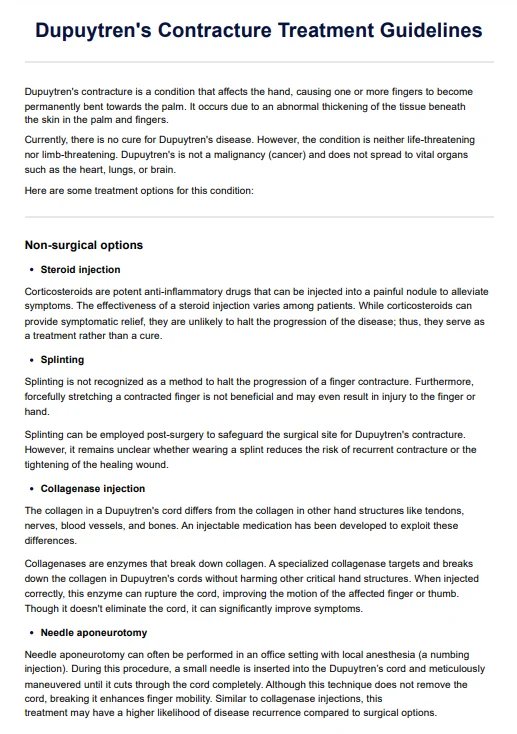Dupuytren's Contracture Treatment Guidelines provide healthcare practitioners with structured approaches for managing Dupuytren's contracture, a condition where thickened tissue forms in the palm of the hand, leading to contracted fingers.

Dupuytren's Contracture Treatment Guidelines
Our Dupuytren's Contracture Treatment PDF aids healthcare professionals in managing thickened tissue, providing nonsurgical and surgical treatment options.
Use Template
Dupuytren's Contracture Treatment Guidelines Template
Commonly asked questions
These guidelines are intended for healthcare professionals specializing in orthopedics, hand surgery, physical medicine, and rehabilitation.
These guidelines should be followed when evaluating and treating patients with Dupuytren's contracture, especially in deciding between nonsurgical treatments like steroid injections or percutaneous needle fasciotomy versus surgical interventions.
EHR and practice management software
Get started for free
*No credit card required
Free
$0/usd
Unlimited clients
Telehealth
1GB of storage
Client portal text
Automated billing and online payments











